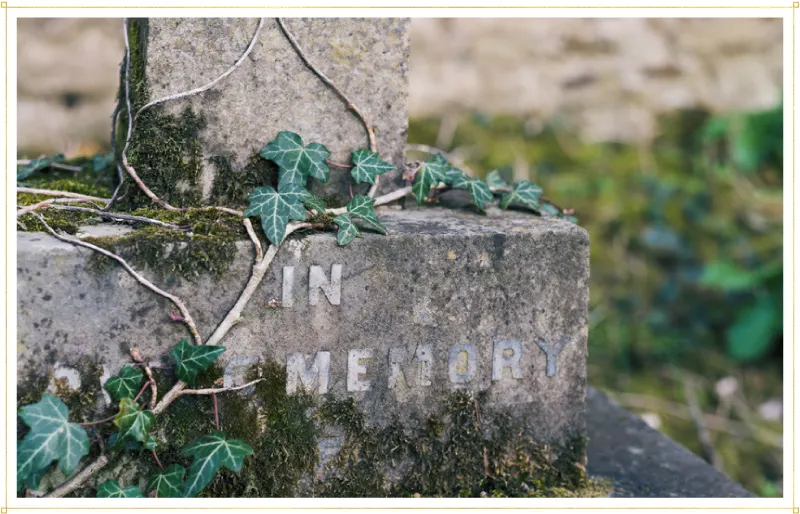March 03, 2017
13 Helpful Tips for Proper Funeral Etiquette
When a loved one is no longer with us, it is important to take the time to celebrate their life. However, there are many factors to consider when it comes to etiquette for a funeral, such as what to wear, where to sit, and whether or not it is appropriate to attend a certain person’s funeral.
To help you answer these questions, we’ve outlined the top 13 most asked questions about attending a funeral, along with a guide to the 10 most popular sympathy flowers so that you can properly show your condolences. This guide will show you the fundamentals of proper funeral etiquette so that you will know how to communicate properly with the deceased person’s grieving family, while exuding dignity and respect during the funeral service.
1. Should I attend this funeral?
Since funerals aren’t usually an “invite-only” event, it can be difficult to decide whether or not you should attend. If you knew the deceased, it is an opportunity for you to remember their life and pay your respects. If you did not know the deceased but are close to the family, then it is a way for you to show them your support.
You should not attend a funeral if you feel that your presence will make the family uncomfortable or if it is clearly a private event.
2. What do I wear to a funeral?
Although wearing black is not a requirement for all funerals, you should opt to wear clothing that is conservative. You’ll want to appear dignified and respectful, so stay away from bright colors and patterns which can send the wrong message to the mourning family.
3. Where do I sit at a funeral?
The first and second rows of seats are typically reserved for the close family and friends of the deceased. All other attendees should sit in the remaining rows. If you arrive late, be respectful by sitting in the back as to not disturb others. Once you are seated, it is important to remain seated for the duration of the service.
4. What should I say at a funeral?
Less is more. Do not feel the pressure to overexert your condolences onto the grieving family by saying more than is necessary. A simple “I’m sorry for your loss” or “My thoughts are with you” are sufficient enough to express your support. Those who are suffering from the loss may also feel isolated. Acknowledge their pain by saying something like “This must be so hard for you,” to show that you care for them which will help them feel less isolated.
5. When should I arrive at a funeral?
A good rule of thumb is to arrive 10-20 minutes early to allow for a few moments to interact with other guests before the service begins. If you arrive late, do not walk down the center aisle to take your seat. Instead, use the side aisle to find a seat near the back as to avoid interrupting the service.
6. What if I don’t share the deceased family’s religious beliefs?
Don’t force yourself to say a prayer, or take part in a religious practice that you are not familiar with. A funeral is all about paying your respects to the deceased, which you can simply do by standing and listening to the ceremony that’s taking place in front of you.
7. Should I bring a gift?
Gifting a bouquet of sympathy flowers is an ideal way to express your condolences, and would be much appreciated by the family. You can either bring a bouquet with you to the funeral or can choose to have it delivered to the funeral home beforehand. In addition, you can also send flowers to the residence where the post-funeral reception will take place.
Other thoughtful gift ideas include sending the family’s home a gift basket. If you’re close to the family, consider bringing over a homemade meal to their home. Suffering a loss is already a lot to handle, and chances are, the family or spouse of the deceased would appreciate the extra help. If you aren’t close to the family, but still want to share your condolences, a thoughtful card is a great way to comfort them.
8. Are kids allowed at a funeral?
It is okay to bring children to a funeral if they are well-behaved, especially if they are interested in attending and were close to the deceased. Toddlers and babies should be left at home with a babysitter as they may require more of your attention, and distract you from being mentally present at the funeral.
9. How should I sign the guestbook at a funeral?
Clearly state your first and last name, along with a brief description of your relationship to the deceased. Signing the guestbook is another way to show your support for the grieving family by letting them know you attended the service.
10. Is it okay to use my smartphone at a funeral?
Please keep your smartphone on silent and put away for the majority of the service. Using your phone during such a sensitive time may be seen as an invasion of privacy for the grieving family and is therefore inappropriate. If you absolutely need to answer a text or make a phone call, please do so outside.
In addition, a funeral is not the time or place to take photos unless you have the family’s permission to do so.
11. What is a funeral processional and a recessional?
A funeral processional is when the casket is brought in. The officiant leads the processional and is followed by pallbearers who carry the coffin. Next to walk down the aisle are the family and kin to the deceased followed by close friends who will take their seats in the first few rows, marking the start of the ceremony.
A recessional marks the end of the funeral service. Again, the officiant leads the way followed by the pallbearers who carry the coffin out. They are followed by family and friends of the deceased. Typically, one member of this group will give their thanks to the remaining guests at the ceremony. Finally, the processional forms, in which funeral attendees make their way over to the gravesite where the deceased will be laid to rest.
12. What do I do at a graveside service?
When making your way to the gravesite, avoid walking directly on other graves, memorial stones, and plaques.
Once you arrive at the graveside memorial, you will see chairs lined up. These are reserved solely for close family members of the deceased. If this does not apply to you, stand behind the chairs and allow room for other kin, or close family to stand near the grave. Dress conservatively, and if you are wearing a hat, remove it during the service.
13. What is the difference between a funeral and a memorial?
Both funerals and memorials are held to celebrate a deceased person’s life and to give the opportunity to those who knew them the chance to pay their respects. A funeral takes place when the deceased person’s body is present. The funeral service may either be an open or a closed casket ceremony and involves a processional and a recessional. It is an opportunity for family and close friends to take one last look at the deceased before the body is buried or cremated.
A memorial takes place when the deceased person’s body is not present. Family members and friends come together at an appropriate location, like a church or event hall, and give speeches to celebrate the deceased person’s life. There are several reasons why a deceased person’s family may choose a memorial service over a funeral including: if the body has already been cremated, or if their ashes have already been scattered.
In addition, the format of a memorial service is much less formal than a funeral, and may be a better fit for those who want to celebrate the life of their loved one without worrying about materialistic considerations associated with funerals such as cost.
A funeral is one of the most important occasions where proper etiquette should be upheld. Because death is a sensitive topic that is not talked about much, one of the biggest challenges is finding a way to properly express your condolences for the grieving family in a way that is both genuine and unforced.
10 Popular Types of Funeral Flowers
Show your condolences by sending a beautiful bouquet of sympathy flowers. Flowers are an ideal way to show your love during difficult times, and can bring much-needed comfort. To help you choose the right flowers, we created an infographic below that features the most popular types of sympathy flowers along with their flower meanings so that you can honor a loved one who has passed.
Sources:
www.everplans.com 1, 2, 3, 4 | www.legacy.com | www.emilypost.com | www.funeralwise.com | www.mentalfloss.com | www.funeralwise.com | www.funeralplan.com | www.freitagfuneralhome.com






